by Carl Elliott, SPP Conservation Nursery Manager
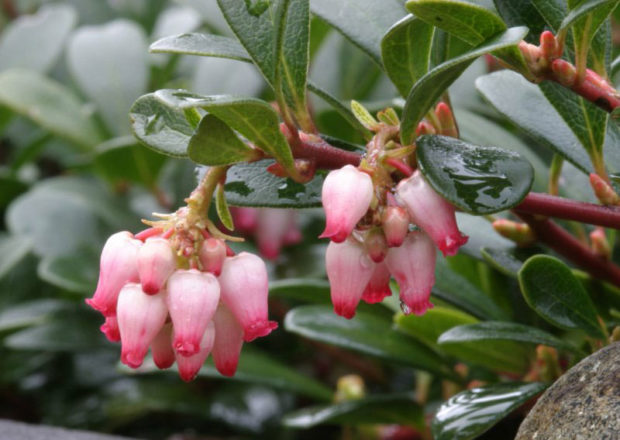
Kinnikinnick (Arctostaphylos uva-ursi) is tough to grow from seeds. Kinnikinnick seeds have compound dormancy: before germination can occur, the seed coats must be made permeable to water (breaking physical dormancy), and must undergo a number of internal biological processes (breaking physiological dormancy). Though there are known methods to overcome the double dormancy, the results are highly variable and inconsistent. Most commercial nurseries grow the plant from softwood cuttings, but these lack the genetic diversity of seed-grown stock.
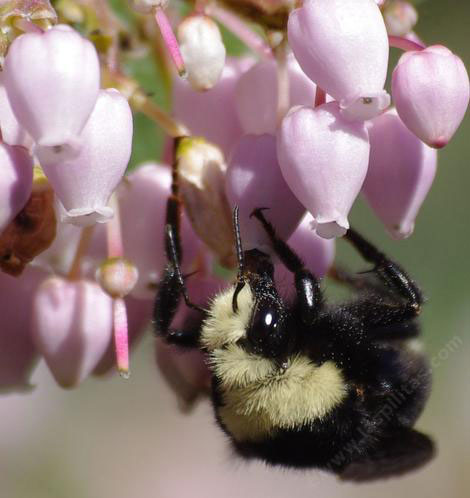
Bombus vosnesenskii collects nectar from kinnikinnick flowers.
SPP’s conservation nursery has taken on the challenge of seed-grown kinnikinnick, because of the benefits it brings to pollinators at restoration sites on Joint Base Lewis-McChord. Delightfully bright yellow-faced bumblebees (Bombus vosnesenskii) and fuzzy black-tailed bumblebees (Bombus melanopygus) perform acrobatics to collect nectar from its flowers. Both of these hardy insects fly out at any early promise of spring. These are just two of the many pollinators that gain sustenance from this important plant.
Kinnikinnick provides both an early bloom time and an extended bloom period spanning a couple of months. This blooming phenology (cycle) allows pollinating insects to build up their populations early in the season. These fortified populations carry over into the spring and summer, providing increased pollination services to many prairie plants. Susan Waters from Center for Natural Lands Management is surveying Salish lowland prairies’ pollinators, and has developed detailed graphics of pollinator networks demonstrating the importance of bumblebees as pollinators for numerous plant species used in restoration.
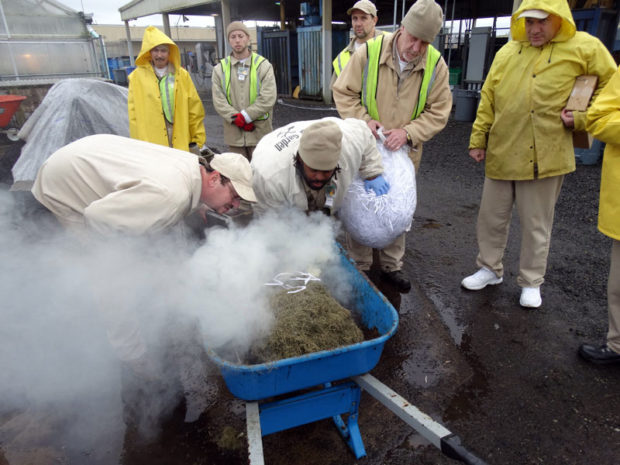
Conservation nursery technicians coax the December fire needed for one of the pre-treatment trials.
This year, SPP program team designed a study of kinnikinnick germination at Stafford Creek Corrections Center (SCCC). The nursery technicians drew from what they had learned about the scientific method from a program workshop. SPP staff and the technicians aim to find out the most consistent pre-treatment to overcome the physical dormancy, plus the best length of time in cold-moist conditions to reduce physiological dormancy. Together we developed a methodology to test means to overcome the dormancy of kinnikinnick seeds and promote germination. In December, SPP-Evergreen and SCCC staff gathered with the technicians to perform the range of pre-treatments.
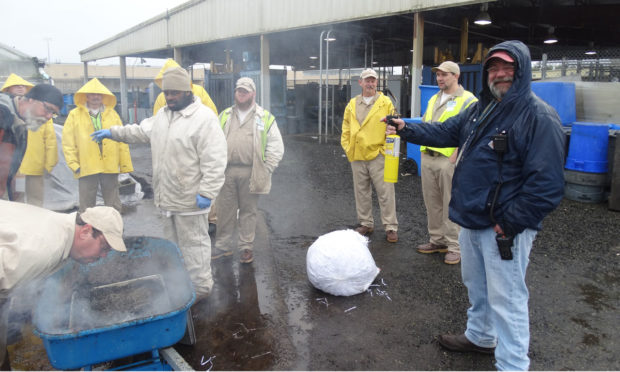
Nursery Specialist Ed Baldwin (right) pokes fun at the chances that they’ll need the fire extinguisher.
We performed three pre-treatments and a control. First was to dip the seeds in 80°C water for 2 minutes; second we immersed seeds for 24 hours in an acid bath of distilled white vinegar (the most acidic thing we could use in a corrections setting). The third treatment was a very controlled burn: after safety precautions were in place, seed was laid out on a bed of sand and covered with 2 cm of sand; 12 inches of dried grass clippings were piled and lit aflame. Since December in Aberdeen, WA is not particularly dry, fire-prone time of year, significant effort was put into keeping the flame burning.
The seed from each treatment was sown separately in the nursery’s standard cone-tainers, and will spend the winter in cold-wet stratification. Only warming weather of mid-spring can bring forth answers to our germination trials, but already the technicians, staff, and the bumble bees are betting on the outcome.
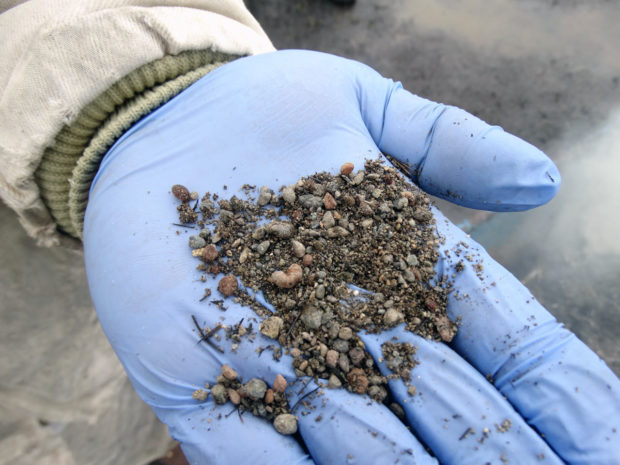 Kinnikinnick seeds look like they survived the controlled burn just fine. |
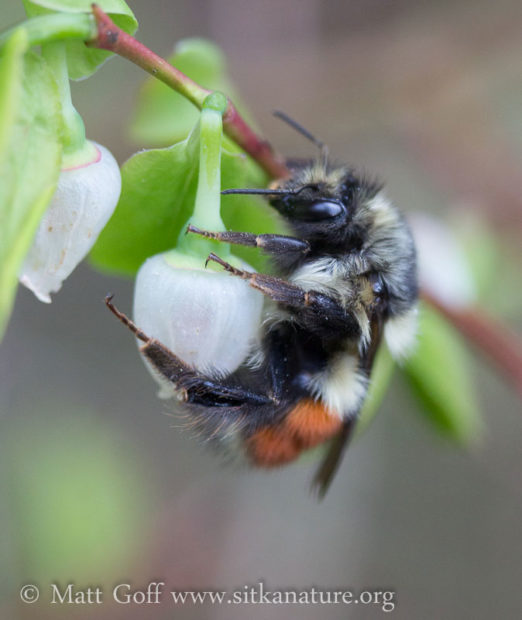 Bombus melanopygus among kinnikinnick flowers. |